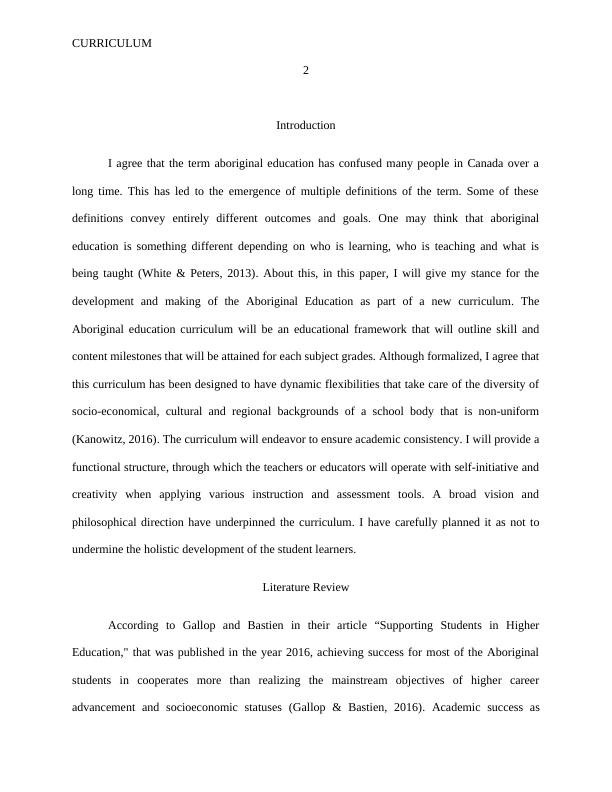Developing an Aboriginal Education Curriculum for Canada
Explain your stance for the design and development of a curriculum. Write an essay or create a blog to support your position.
Added on 2023-05-29
About This Document
This paper discusses the development of an Aboriginal Education Curriculum for Canada that focuses on teaching Aboriginal methods, wisdom, paradigmatic, and gratification within official and informal educational network. The curriculum will be designed to have dynamic flexibilities that take care of the diversity of socio-economical, cultural and regional backgrounds of a school body that is non-uniform. The paper also highlights the challenges faced by Aboriginal students in Canada and the implications of the Aboriginal Education Curriculum.
Developing an Aboriginal Education Curriculum for Canada
Explain your stance for the design and development of a curriculum. Write an essay or create a blog to support your position.
Added on 2023-05-29
End of preview
Want to access all the pages? Upload your documents or become a member.



